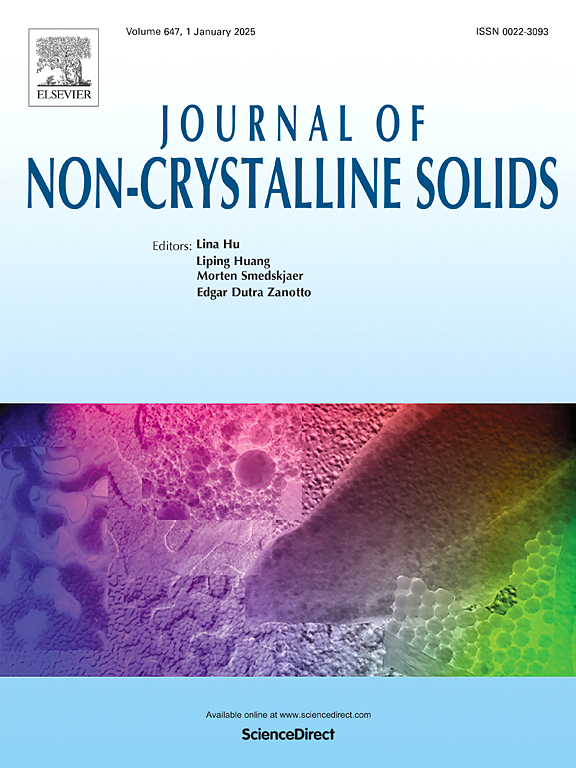Effect of rejuvenation on mechanical behavior and microstructure of Ti-based metallic glass
IF 3.2
3区 材料科学
Q1 MATERIALS SCIENCE, CERAMICS
引用次数: 0
Abstract
Deep cryogenic cycling treatment (DCT) in conjunction with elastic static loading (ESL) has been shown to rejuvenate metallic glasses by restoring their structure to a high-energy state, thus enhancing their plasticity at room temperature. Although the effects of various rejuvenation methods on metallic glasses have been well-documented, the combined influence of different treatments remains underexplored. A key question in this field is whether the application of elastostatic compression to bulk metallic glasses (BMGs) of varying compositions leads to a transition from relaxation to rejuvenation, an issue that continues to spark debate. Additionally, the fundamental mechanisms underlying deep cryogenic cycling treatment in metallic glasses represent a significant area of recent research. This study seeks to clarify the differences between DCT and ESL, both of which are applied within the elastic limit, and to evaluate the potential for superimposing their individual effects. We focus on a lightweight Ti-Zr-Be-Cu BMG as our experimental material. The BMG samples were subjected to DCT, ESL, and a combination of both processes. We then characterized and compared the mechanical behavior and microstructural alterations induced by each treatment method. Our analysis aims to elucidate the rejuvenation mechanisms associated with these approaches.
求助全文
约1分钟内获得全文
求助全文
来源期刊

Journal of Non-crystalline Solids
工程技术-材料科学:硅酸盐
CiteScore
6.50
自引率
11.40%
发文量
576
审稿时长
35 days
期刊介绍:
The Journal of Non-Crystalline Solids publishes review articles, research papers, and Letters to the Editor on amorphous and glassy materials, including inorganic, organic, polymeric, hybrid and metallic systems. Papers on partially glassy materials, such as glass-ceramics and glass-matrix composites, and papers involving the liquid state are also included in so far as the properties of the liquid are relevant for the formation of the solid.
In all cases the papers must demonstrate both novelty and importance to the field, by way of significant advances in understanding or application of non-crystalline solids; in the case of Letters, a compelling case must also be made for expedited handling.
 求助内容:
求助内容: 应助结果提醒方式:
应助结果提醒方式:


